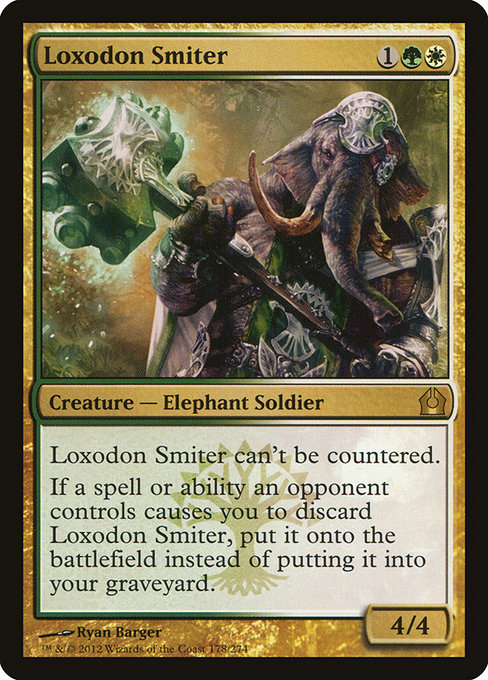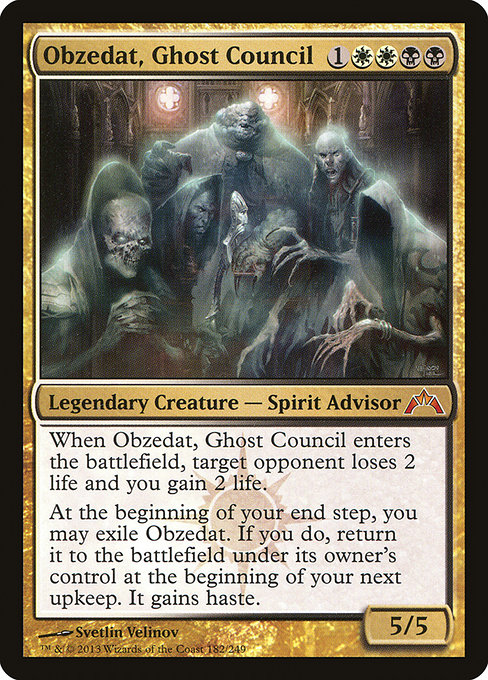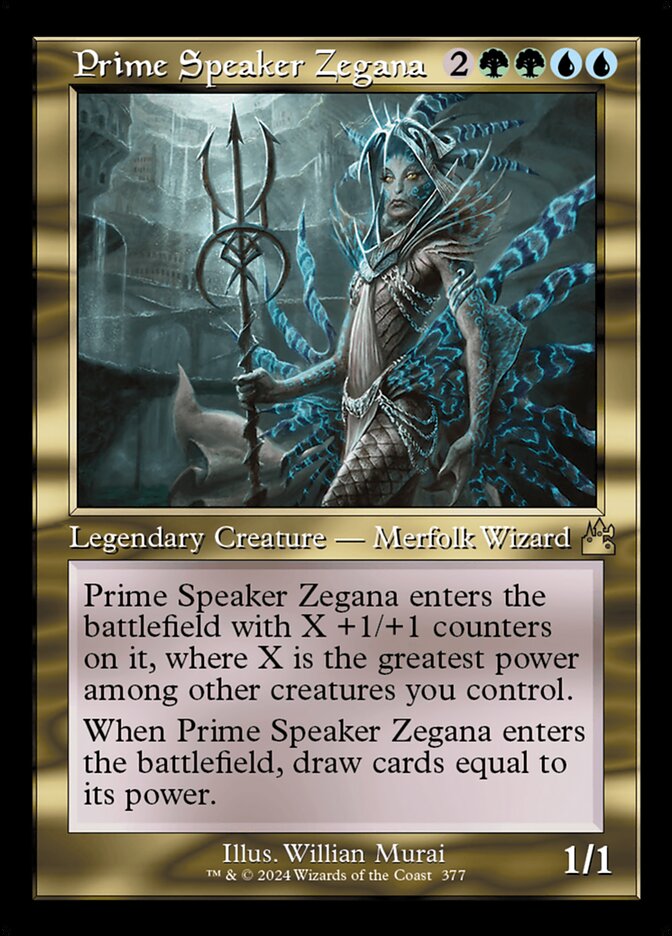Are you a Quiet Speculation member?
If not, now is a perfect time to join up! Our powerful tools, breaking-news analysis, and exclusive Discord channel will make sure you stay up to date and ahead of the curve.
During these nine months, a lot went great with my investments. The overall result was largely positive (+45.81%)--within the range of profit I was expecting at the beginning of the adventure (30-80%). Although a large majority (85%) of the positions of the Secondary Portfolio yielded positive returns, I can't say the same about the positions of the Primary Portfolio--only 64% of them turned out positive.
When looking at my Primary Portfolio, most of my Tix were invested in Return to Ravnica block positions and M14 positions. I was expecting good returns from these two categories.
My M14 positions were composed of all of the fifteen mythics of the sets plus Chandra's Phoenix and Mutavault. The M14 positions altogether finished with a +59.4% profit, a net +905 Tix (more detail in these two previous articles here and here)--a decent result considering the "blind" bet I made with the M14 mythics.
At the opposite end of the spectrum, Return to Ravnica block investments performed really poorly. So poorly that, after nine months, I lost 107 Tix. It's not a total disaster since I invested more than 2400 Tix total in Return to Ravnica block cards, but it's a shame if you look at what the buying prices of these cards were back in August 2013. With the exception of some real losers, such as Duskmantle Seer which decreased in price every single month, all the other cards had their shot to make me some Tix.
So what happened? Poor management, period.
This new chapter of my Nine Months of Portfolio Management could have been called "Nine Months of what not to do if you want to make some tix on MTGO". Here I'm going to review and discuss the numerous mistakes I made with the rares and mythics from the Return to Ravnica block I invested in.
Speculating on Standard Cards Is a Balancing Act
After more than three years, and also after this portfolio experience, I can say without a doubt that speculating on Standard is the trickiest type of investment on MTGO.
By nature, speculating on Standard cards are subject to a lot of uncertainty in addition to have an expiration date. Prices are sensitive to metagame shifts, tournament results, drafts supply, other formats demand and rotation out of Standard.
During their first year in Standard, prices of cards from the new block remain usually flat or slowly decrease on average. Take the price indexes of ISD, DKA and AVR--they remained pretty flat, with local small variations, until the release of Return to Ravnica. Then prices of all of the three Innistrad block sets took off to hit a highest in March-April 2013.
 |
 |
 |
 |
Now let's take a look at RTR, GTC and DGM price index. This was a little bit different than the Innistrad block because both RTR and GTC were two big sets. When GTC got released, drafts were triple GTC and not two RTR + one GTC. This momentary stop of RTR supply drove the prices of RTR cards up for about three months, then they came back close to their base line around M14 release.
 |
 |
Independently of these differences, my strategy was to acquire Return to Ravnica block cards during the M14 release events when they were supposed to be at a fairly low price compared to later in the Standard season, and especially compared to the highest I anticipated in March-April 2014.
Until then, and as of August 2013, price trends were similar enough with Innistrad block prices. This was omitting a crucial event that made a big differencein terms of Standard speculations between the 2012-2013 Standard season and the 2013-2014 Standard season--the Standard Pro Tour.
During the Innistrad/Return to Ravnica blocks Standard era, the Standard Pro Tour (Pro Tour Gatecrash) was held mid February 2013. Following the Pro Tour, all the spotlighted cards are up and players are encouraged to play Standard--March 2013, the highest of Innistrad block cards.
During the Return to Ravnica/Theros blocks Standard era, the Standard Pro Tour (Pro Tour Theros) was going to be held in October 2013, after the release of Theros, not in February 2014 after the release of Born of the Gods. As a result, many cards from the Return to Ravnica block spiked after the Pro Tour Theros. The Standard landscape was now going to have six to eight months of several metagame shifts with ups and downs in prices according to these changes.
With several metagame changes and cards going up and down, the average index didn't change much. This phenomenon is pretty clear with the Gatecrash index--it seems relatively flat, although individual cards fluctuated quite a lot.
 |
 |
With my basket of rares and mythics from Return to Ravnica block, waiting until March-April to sell most of my cards was not a suitable strategy. However, the worse here for me is that I was not able to adapt--I was too focused on my goal to reproduce what happened with Innistrad block prices and was too greedy to sell when opportunities happened, such as after the Pro Tour Theros.
Return to Ravnica Block Rares
On average, sets of Return to Ravnica block didn't move that much after the Pro Tour Theros. Dealing with each card individually should have been the strategy to apply.
In my Primary Portfolio, I bought 17 rares from Return to Ravnica block. My choices were based the potential of these cards in the future Standard and, for some, Modern as well. And yes, I thought Varolz, the Scar-Striped had a shot in Standard or Modern.
Looking back at their prices in August 2013, and to the exception of our beloved Varolz, they all look like winners, don't they?
Actually, Varolz included, all of these 17 rares got more expensive at some point between August 2013 and April 2014. Even better, based on MtgGoldfish charts, 35% of these cards saw an increase of their price by at least 50%, and 58% of these cards saw an increase of their price by 100% or more.
So how come my overall result with these cards was only a 22% profit when they had the potential to yield a 80% profit in average?
As I mentioned earlier, lack of attention and greed made me make the wrong decisions and made me pass on very good selling opportunities. Here are two of my really bad misses.
I bought Mizzium Mortars at 2.04 Tix in August 2013 and sold it for a ridiculous 1.09 Tix in April 2014, pretty much missing everything in between!

Pretty hard to be less efficient, isn't it? A nice waste of time and money.
Loxodon Smiter never really got integrated into tier 1 decks in Standard. But before the Pro Tour Theros, people tried to brew decks with it, especially since GW Aggro won Pro Tour Dragon's Maze. The price of the of Loxodon Smiter was till up until the metagame set by the Theros excluded it.

Not only did I miss good opportunities to sell the Smiter with a decent profit, but I also missed the opportunities to break even. Bought for 1.02 Tix in August 2013, I sold Loxodon Smiter for an anemic 0.26 Tix at the end of April! The investment was good, its management was not.
Advent of the Wurm also had a similar trajectory with a similar result since I applied the same bad management.
In the end, I made some tix off of these rares. Luckily for me, and since I was hypnotized by my finish line in the spring, some prices rose in that period, such as Detention Sphere, Abrupt Decay and the Shock Lands, allowing me to net a total 22% profit on these 17 rares.
Take home messages
This experience made few points very clear for me
- Standard rares valued at 1-2 Tix range often increase by 50% to 100% at their best, and you should not expect much more from rares. When rares fall out of flavor, their price can drop pretty quickly. Junk rares, such as Pack Rat are different, since they can jump from 0.05-0.1 Tix to 3-4 Tix--the ceiling being essentially the same.
- Sell whenever the opportunity presents itself. Waiting for a special event or a specific time will be more than often pointless. Remember that you can reinvest the Tix you just made, so waiting for an hypothetical better profit is rarely a good move.
- The Standard Pro Tour strongly defines the metagame and cards that are going to be valuable or not. This year, the Standard Pro Tour, PT Khans of Tarkir, will be in October. You may want to make some moves, whether it is buying or selling, with your Theros specs at that time.
Return to Ravnica Block Mythics
19 mythics from Return to Ravnica block were part of my Primary Portfolio. These were a mixed selection of potentially good cards (Legion's Initiative, Progenitor Mimic...) junk mythics ( Council of the Absolute, Reap Intellect...) and mythics that have shown their potential in the past and were at attractive prices with a new Standard season ahead ( Angel of Serenity, Obzedat, Ghost Council...). In the end, many of them were not ideal choices from me.
Based on their price trajectory, results were pretty mixed as well. As you can see in the Final Results, these mythics really represent an example of lousy portfolio management.
Some mythics, such as Angel of Serenity and Niv-Mizzet, Dracogenius, never did anything during these nine months and kept dipping from my original investment. Interestingly or not, they pretty much have the same price right now, around 1.5 Tix. I kept these guys all the way and lost more than I should have despite the potential for a resurrected price history.

Some mythics experienced ups and downs around my buying price. Obzedat, Ghost Council, Rakdos's Return, Prime Speaker Zegana, and Progenitor Mimic are good examples. As I talked about last week using Obzedat as an example, I was simply not able to make up my mind and grab the selling opportunities I was offered, often with a 50% or more profit.
 |
Finally, for a minority of mythics, including Deadbridge Chant and Blood Baron of Vizkopa, I was able to take the opportunity to sell them with a reasonable profit of around 50%.
 |
Do you see the big absence in this list? Jace, Architect of Thought.
Jace was not among the positions I invested in for my Primary Portfolio, as I didn't consider him as a long term investment. However, I did speculate on Jace as part of my Quick Flips, bought at around 20 tix and sold for around 27 Tix within three weeks in September. It was probably my best investment with Return to Ravnica block mythics.
Overall, 10 of theses 19 positions ended up losing. And the with poor gains from the 9 winning positions, I lost more than 230 Tix here. Quite disappointing.
Take home messages
- Since mythics have the potential for bigger swings than rares in general, they can crash hard.
- I would not speculate on mythics based on vague assumptions that they have a potential. Since a 5 Tix mythic can rise up to 30 Tix if conditions are favorable, I would rather wait for decks to include that mythic.
- Similarly to rares, following price and metagame trends is really what's needed to secure gains and avoid big losses. Cashing out with a 50% profit in two or three months is a great move, and you don't want to let pass such opportunities without good reasons. Less greed, more profit.
Theros Block Perspectives
A few words about Theros specs. Several cards from Theros block will be good targets during M15 release events, when prices are supposed to be, on average, at a seasonal low and lower than they will be during the rest of the Standard season, at least for the cards that are going to be played.
There are many potential targets, including all the Temples, Elspeth, Sun's Champion, Courser of Kruphix, Thoughtseize and many other Gods and planeswalkers. I'll probably discuss these potential targets in a coming article.
Nonetheless, based on what I exposed here in this article, you should look at the Pro Tour Khans of Tarkir as a good opportunity to sell many of your Theros positions. Cards like the Temples will probably fluctuate during all the Standard season. For other cards, it could be more delicate to predict if they will have a shot once the Standard format is defined by the Pro Tour in October.
In all cases, keeping your eyes on the market trends and on your specs is the way to go.
Thank you for reading,
Sylvain Lehoux












































This is a really great article Sylvain and this is coming from someone who doesn’t play MTGO (doesn’t even have an account) nor has ever invested in it. I envy your guys ability to buy/sell cards so quickly. My concerns with MTGO are heavily reliant on the fact that all I read is numerous issues/complaints/problems/crashes with the client and the fact that I can invest thousands of dollars into it and it’s still rather difficult to get my money back out. But I still really enjoyed reading over your list of picks (and even the failures) and I enjoyed the solid analysis and the reminder that passive investing…always costs you.
Thanks David!
This id definitely the huge advantage of MTGO over paper Mtg, deals are available 24/7, instant fast and for no fees.
As a investor, and not a player, I almost never had any problem with the client, maybe with the new one today? I have been “practicing” with it for the past weeks and beside having to familiarized with a new design I didn’t have any problem.
Actually, another thing I realized with portfolio management is that it was easier to get the money out than in.
Buying tix a good price, e.g. $0.95/tix or less, is not that common. You may want some QS insiders selling some here, or very few add on MTGO. Ebay or stores online are more around $0.99/tix. Mtgotraders.com is at $1.10/tix and even Goatbots just recently up their price to $1.02/tix.
Selling tix, mtgotraders buy them at $0.95/tix, and I was surprised to see how fast I was able to sell hundreds of tix (when I closed this portfolio) by posting an add on MTGO. Some people even contacted me later on to try to get more tix! With paypal gift transaction it is again fees less.
I think it would be possible to out 1-2kTix/month quite easily and at decent price if you wanted to.